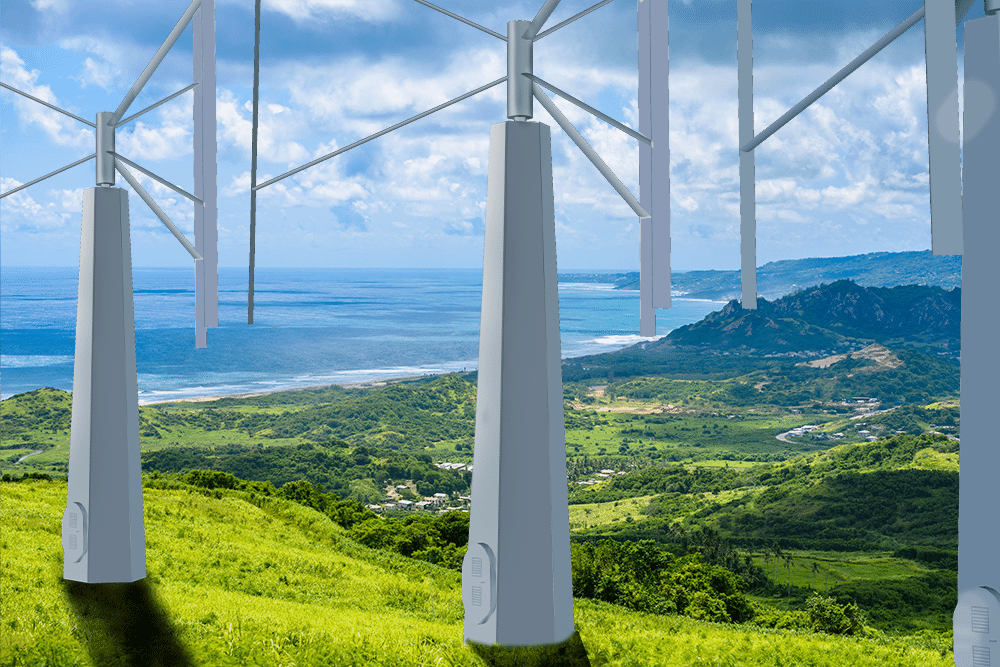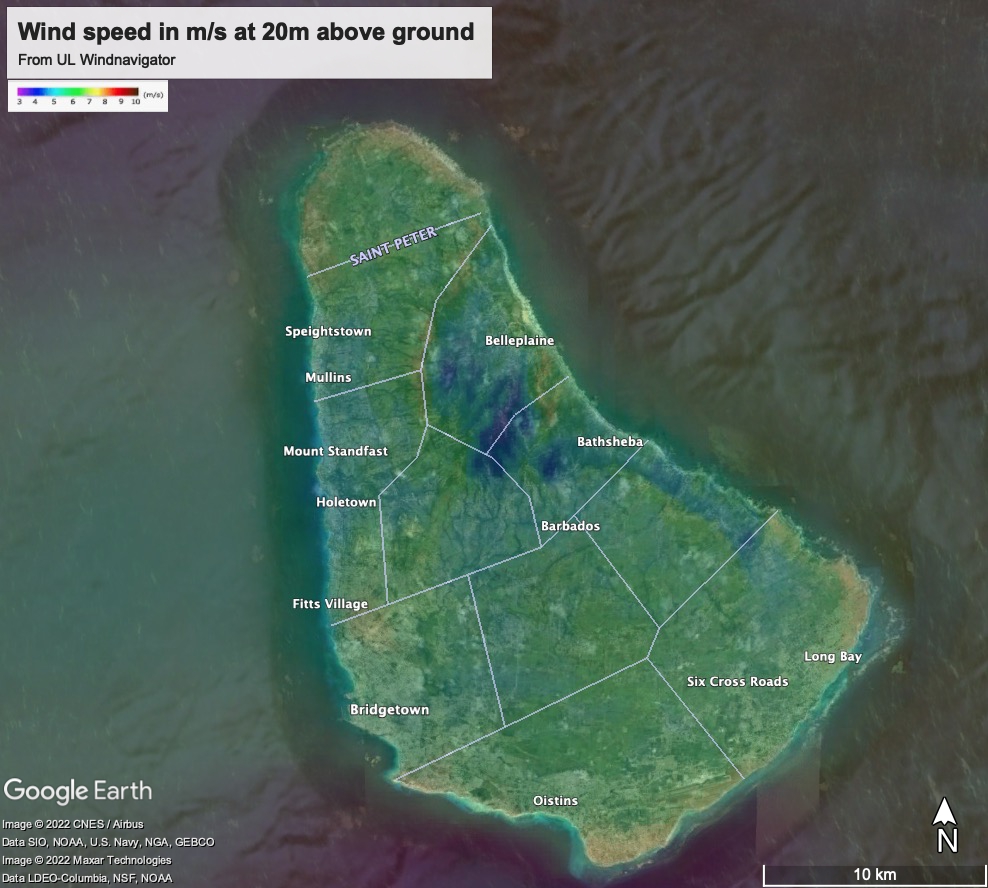
Like most of the beautiful islands in the Caribbean, Barbados gets 95.4% of its electricity from expensive diesel generation. With rapidly intensifying climate change, the island is facing more droughts and water shortages than ever before. In response, the government of Barbados has adopted the goal of using 100% renewable energy by 2030.
Bajans do not widely support large solar farms because of the potential loss of the densely populated country’s arable land. With the island’s plentiful trade winds the clear solution for renewable energy is wind turbines, yet only one project has been installed. The 200+-foot-tall machines face problems due to lack of available space on small properties, tight and twisting roads, impacts on views, noise levels, and more.
How can Wind Harvest Help?
Due to their shorter stature and production methods, Wind Harvester turbines present an exciting opportunity for Barbados. Our turbines:
- take up little land for the large amount of energy they produce.
- fit on smaller properties and more readily comply with setback easements.
- can be transported and assembled using trucks that can drive the island’s difficult roads.
- would not disrupt existing agriculture.
A Long-Term Commitment
In 2014, Wind Harvest hired Dr. Ariana Marshall to assess the island’s potential for our compact Wind Harvesters. Dr. Marshall’s report and the discussions she arranged for us with government and industry leaders triggered Wind Harvest to make a long-term commitment to bringing Wind Harvesters to the island.
With Dr. Marshall’s help, we’ve been collecting data, developing wind speed maps, and lining up owners of properties interested in leasing their land for a Wind Harvester project. Our analysis shows that we could place 200+ megawatts of Wind Harvesters (4,000 turbines) on the island and produce a great deal of generational wealth for the island with VAWTs that last 70+ years.
Assessing our Impact
Wind Harvest is committed to undergoing a cumulative environmental, cultural, and economic impact analysis of adding our turbines in large numbers on the island. Dr. Marshall leads this effort to identify and prevent or mitigate the possible negative impacts. The first demonstration project on the island will evaluate the following:



